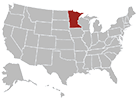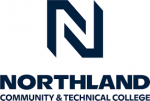
Patient access representatives are required at all hospitals, clinics, surgery centers, urgent care facilities, and other medical locations, and many are also employed at insurance companies.
The main goals of a patient access representative are to check in on new patients and document their ailments and billing information, ensure financial collections are complete, and work on other administrative tasks.
While this may sound like a stress-free, straightforward job, it can be incredibly demanding, considering all information input into the database flows downstream to doctors and nurses.
However, it can be gratifying, given that patient access representatives are helping others in their most dire need.
Keep reading to learn more about becoming a Minnesota patient access representative!
Page Navigation
- Steps to Become a Patient Access Representative in Minnesota
- Schools in Minnesota
- Patient Access Representative Schools in Minnesota – Summary Table
- Salary
- Frequently Asked Questions
- What is the most rewarding aspect of becoming a patient access representative in Minnesota?
- Who are the most successful Minnesota patient access representatives?
- What are the Minnesota requirements for becoming a patient access representative?
- What general skills are needed to become a Minnesota patient access representative?
Steps to Become a Patient Access Representative in Minnesota
Becoming a patient access representative is straightforward in Minnesota and comprises the following steps:
Step One: Find a Training Program
All Minnesota-based patient access representative training programs require a high school diploma for admissions.
Therefore, you must earn the diploma before starting the program, but you can apply as a high school senior.
When searching for a program, whether a certificate or associate degree, finding one with flexibility and near your home if you’re completing it in person is essential.
Step Two: Participate in an Internship
During the program, opt for completing an internship so you can gain firsthand experience in the medical industry.
This will prolong your program, but the time spent working with an actual patient access representative will open many doors.
Step Three: Complete the Program
Once you have a passing grade and completed the internship, you can graduate and take a certification examination while searching for jobs.
Step Four: Earn a Certification
The certification exam is offered at the national level, so it is important to take it as close to graduation as possible since the information will still be fresh.
In addition, many online practice exams are available to ensure you’re as well-prepared as possible.
While the certification is not a state or national requirement, employers view candidates more highly since they took the time to earn an unrequired document.
Step Five: Find Employment
After completing an internship, training program, and certification, the final step is finding employment at a local medical facility or insurance company.
The employer you seek will vary based on your career goals.
Some graduates use patient access representative training to continue their education and earn higher degrees in other medical functions.
Schools in Minnesota
National Association of Healthcare Access Management
NAHAM offers a patient access educational program via their partnership with Litmos, an outcomes-based education that helps professionals improve performance within the revenue cycle.
Through the Litmos online format, students can customize their curriculum based on requirements.
In addition to individual courses, the school offers several program bundles, including:
- CHAA Certification Preparation – the CHAA Certification Prep bundle helps candidates prepare for the CHAA exam.
- CHAM Certification Preparation – similarly, the CHAM Certification Prep bundle helps candidates prepare for the CHAM exam.
- Collections – the Collections bundle focuses on the financial collections aspect of the career.
- HIPAA – this bundle covers all HIPAA-related topics.
- NAHAM AccessKeys – this bundle focuses on AccessKeys KPs and the ability to trend and track monthly data.
- Work from home – the Work from Home bundle prepares learners to remote patient access professional work.
Northland Community and Technical College
The patient access specialist program offered by Northland Community and Technical College prepares students for managing patient customer services and encounters, as well as additional requirements for the intake and processing of patients within a healthcare setting.
The most critical topics in the program include canceling appointments, coordinating, scheduling, verbal and written communication, information systems, revenue cycle, registration, admission, patient check-in, and customer service.
The program is comprised of 27 credits, all of which are offered in an online format.
Penn Foster
Penn Foster is an online-only accredited school that offers various medical training programs, including the patient access representative option.
In addition, the school helps sharpen students’ administrative skills relevant to real-world medical facilities.
The curriculum comprises electronic medical records and office procedures, medical terminology, billing and health insurance, ethics, law, and confidentiality, and pharmacology and pathology topics.
Patient Access Representative Schools in Minnesota – Summary Table
Top 3 Schools in Minnesota
| School Name | Address |
|---|---|
| National Association of Healthcare Access Management | 2001 K Street NW, 3rd Floor North: Washington, DC 20006, USA |
| Northland Community and Technical College | 1101 State Hwy 1, Thief River Falls, MN 56701, USA |
| Penn Foster | 14300 N. Northsight Blvd. Suite 125. Scottsdale, AZ 85260, USA |
Salary
The average salary for a U.S. patient access representative is $50,300, with pay ranging from $45,800 to $56,300.
In Minnesota, the average pay is slightly higher at $51,600, ranging from $47,000 to $57,700.
Annual Salary Range:Average Salary of Patient Access Representatives in Minnesota
| City Name | Salary |
|---|---|
| Minneapolis | $53,686 |
| St. Paul | $53,686 |
| Duluth | $48,249 |
| Rochester | $50,517 |
| Eden Prairie | $53,596 |
| Lakeville | $53,354 |
| Minnetonka | $53,686 |
| Saint Cloud | $48,330 |
| Akeley | $47,198 |
| Burnsville | $53,535 |
Regional Salary in Minnesota
| Region | Employed | Avg. Annual Salary | Avg. Hourly Pay | Top 10% Annual Salary | Bottom 10% Annual Salary |
|---|---|---|---|---|---|
| Duluth, MN-WI | 260 | $51,240 | $24.63 | $62,040 | $40,230 |
| Mankato-North Mankato, MN | 30 | $55,070 | $26.48 | $70,680 | $40,390 |
| Minneapolis-St. Paul-Bloomington, MN-WI | 1,780 | $61,450 | $29.55 | $82,490 | $43,710 |
| Rochester, MN | 280 | $51,620 | $24.82 | $64,890 | $42,030 |
| St. Cloud, MN | 210 | - NA - | - NA - | - NA - | - NA - |
* Employment conditions in your area may vary.
Frequently Asked Questions
What is the most rewarding aspect of becoming a patient access representative in Minnesota?
Most patient access representatives entered the field to help those in dire times of need.
Many reports that eliminating the fear of the unknown and explaining medical processes and procedures to the patient is one less aspect of the situation they must worry about.
Also, since patient access representatives are heavily involved in the financial aspect of the process, they work with patients to find payment plans within their budget.
Who are the most successful Minnesota patient access representatives?
Those who strongly desire to help others and are detail-oriented become the most successful patient access representatives.
Also, most medical positions are stressful, so those who manage stress well and don’t bring the challenges of the day home with them will have a fruitful and positive career.
What are the Minnesota requirements for becoming a patient access representative?
While the state doesn’t have minimum requirements, employers at all medical facilities do.
The primary need is to have at least one certificate in the field.
Of course, the more educated candidates are, the more attractive they are to potential employers, and they can earn a better salary.
Other employer requirements include strong verbal and written communication skills and Microsoft Office proficiency.
Potential employers will favor candidates with previous healthcare experience in any role over those who do not.
What general skills are needed to become a Minnesota patient access representative?
In any role facing customers, clients, or patients, customer service and human compassion are at the top of the list of most valuable skills.
Patients want to feel like they are being heard and viewed as real people, not just sick or injured individuals.
Also, Minnesota patient access roles require excellent communication and interpersonal skills, strong computer literacy, excellent attention to detail, and outstanding organizational competencies.




